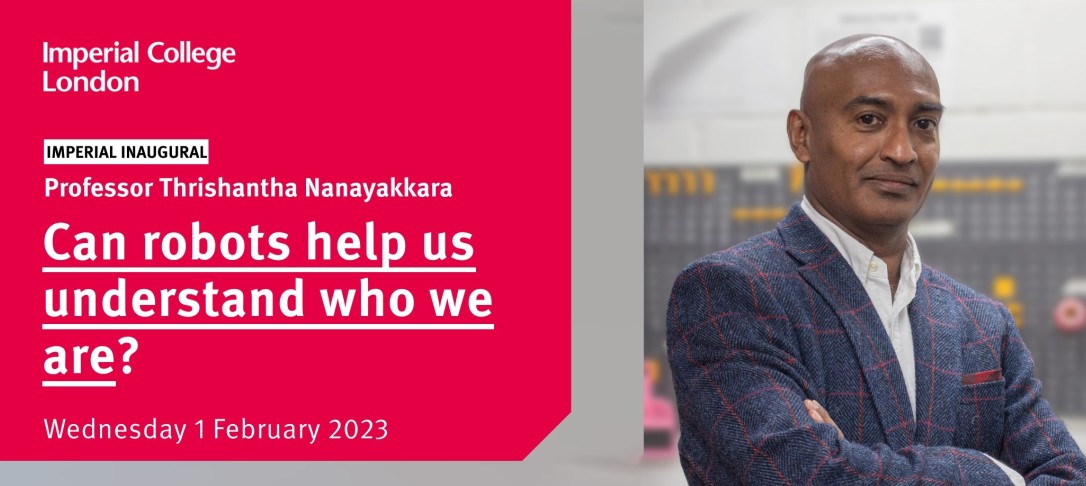
Join Professor Thrishantha Nanayakkara, online or in person, for his Imperial Inaugural.
We have limited in-person spaces available so please ensure you register in advance via Eventbrite.
Feel free to join us online
Link: https://bit.ly/YT-Thrishantha
Abstract
In the late 19th and early 20th century artists and social activists dreamt of intelligent machines replacing human work in harsh conditions. Today we live in an era where artificial intelligence algorithms amaze us with complex pattern recognition and information processing. However, most algorithms fail when it comes to physical interactions.
Many suspected reasons have been explored such as computing speed, memory, accuracy of sensors, bandwidth of actuators, and mechanisms that kept getting obsolete with rapid advances in technology. However even with today’s most advanced technologies, we remain reluctant to trust a robot to hold a hamster let alone physically examine a patient and only recently have we seen two-legged robots that can come close to walking like a toddler.
Professor Thrishantha Nanayakkara directs the Morph lab at the Dyson School of Design Engineering, Imperial College London, that uses new soft robot designs to test hypotheses around how physical hardware solves dynamic interaction problems that would otherwise require complex numerical algorithms. In this talk, he will show several recent findings in the domains of soft tissue palpation, whisker based haptic perception, and locomotion on steep slopes to highlight the importance of a fine symphony among numerical algorithms and hardware mechanisms to survive in unstructured environments.
Biography
Thrish is the Director of the Morphlab at Dyson School of Design Engineering (DSDE), Imperial College London. At present, he is the Speaker of the Imperial Robotics Forum consisting of 44 robotics labs, and a founding Director of the UK Robotics and Automation Society Strategic Task Group for Soft Robotics. His scientific work has pushed the boundaries on how tuning the body improves the efficacy of action and perception in human-human and human-robot interactions. He graduated with a first-class honors degree in Electrical Engineering from the University of Moratuwa, Sri Lanka, and secured a masters degree with distinction in Systems Control, and PhD in Robotics from Saga University, Japan. Since then, he has worked at leading laboratories for robotics and human motor control, including the Laboratory for Computational Motor Control, Johns Hopkins University, MIT Computer Science and Artificial Intelligence Lab (CSAIL), Harvard Neuromotor Control Lab supported by a Radcliffe Fellowship at Harvard University. His publications are co-authored by colleagues from MIT, Harvard, Johns Hopkins, Clemson, UC Santa Barbara (USA), Ritsumeikan University, Kyushu University, and NTT Communication Science Laboratories (Japan), University of Melbourne (Australia), IIT, Scuola Superiore St Anna, University of Carlos III Madrid, Cambridge, Bristol, and Queen Mary (EU and UK).


